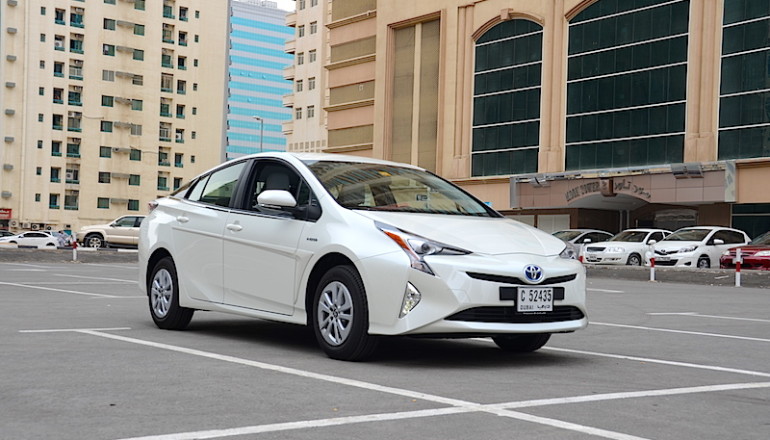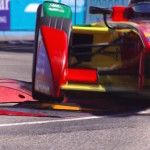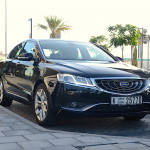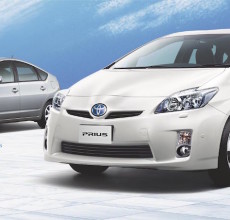The future set sail twenty years ago, but washed up on our shores just a few weeks ago. The 4th generation Toyota Prius has come a long way from the hybrid that won the hearts of early adapters to being the world’s largest selling at 3.5 million so far. The Prius seems to be primed to initiate an eco-movement on our side of the world and less stops for filling up is just a start.
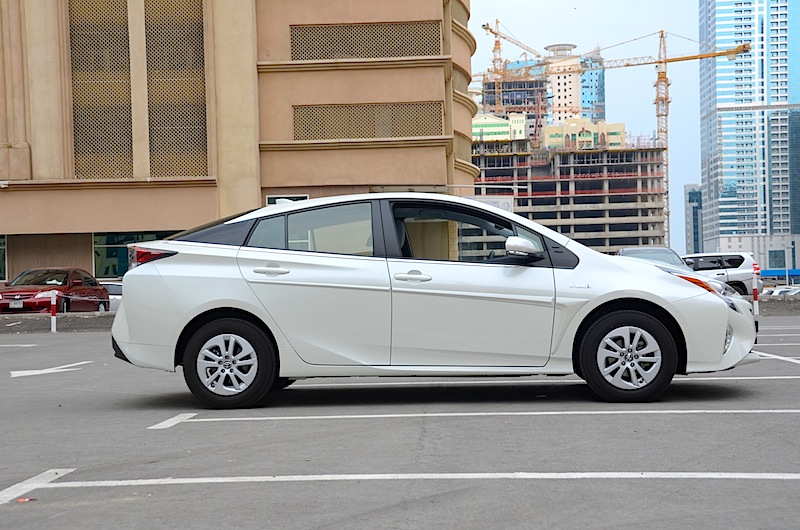
The design of the Prius has been finely chiselled for the latest version; so has the handling. That is a good place to start. For, in a market where hybrids are still looked at as an alien invasion from Planet Future, my task would be to see how little of the vital H does this car bring to mind, on its drive. In other words, how ‘normal’ does this hybrid behave?
THE SPECS: 1.8 L 4-cylinder Aluminium DOHC 16-valve with Variable Valve Timing with intelligence (VVT-i) / Permanent Magnet AC Synchronous Motor / Regenerative Braking / Electronically Controlled Continuously Variable Transmission (ECVT) / Suspensions: Independent MacPherson Strut in front and Double-wishbone in rear with stabilizer bars
THE PERFORMANCE: 95 hp @ 5200 rpm and 142 N-m@3600 rpm torque + 71 hp and 163 N-m torque / 0 – 100 kmph in 11.0 seconds + / Test Fuel economy 16.2 kmpl upwards (claimed 26.2km/l)
THE DIMENSIONS: 4540 x 1760 x 1470 mm Wheelbase: 2700 mm Weight: 1390 kg Boot space: 697 L
THE FEATURES: 7 airbags, active front head restraints, Head Up Display, Blind Spot Monitor (BSM) and Rear Cross Traffic Alert (RCTA), Tyre Pressure Warning System
THE PRICE: Dynamic @ AED 89,900 and Iconic @ 97,900
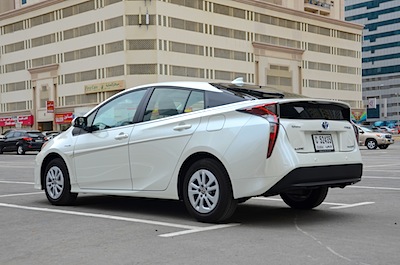
UPSIDE: Fuel economy, Progressive, Cool interiors
FLIPSIDE: Rear wind screen needs getting used to, Vague steering, Fuel savings alone won’t justify upgrade; buy it for the cool quotient
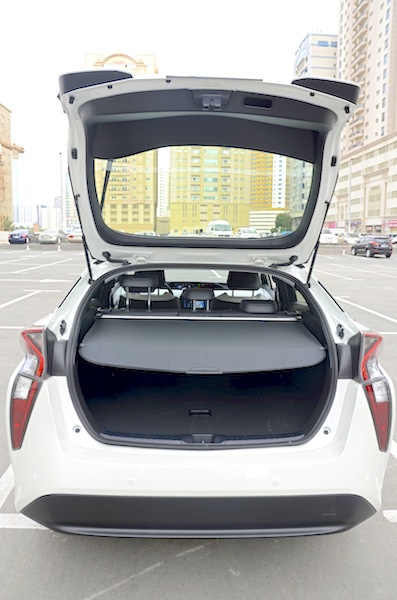
The Drive
I was impressed early on with a rather smooth drive that reminded me that the CVT has shed much of its boredom by now. The fact that it doesn’t shift in steps like a regular automatic transmission is quite in sync with its battery-powered character.
The 1.8L engine hand in hand with the electric motor accounts for the Prius’s foremost claim to fame – its fuel efficiency. Interestingly, with test figures of 100 kms for just about 6.2L of petrol, the Prius is the first car that I almost returned to base, unashamedly, with hardly a speck showing on the fuel gauge. You can’t blame me for thinking of skipping the pump – the fuel was good for another 200kms going by the trip record! Looking back, if I got 17 km/L without depending much on the electrical source – these figures I flaunt could still be one of the worst this car ever achieved!
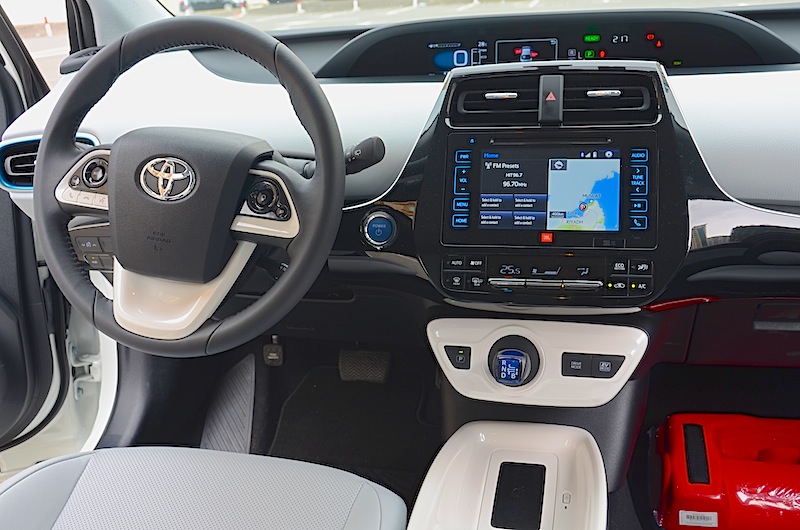
Prius manages its exceptional fuel economy in a simple, practical way. Gasoline engines burn more fuel during start up and acceleration, for the initial thrust. Prius engages the electric motor for this task, especially during city rides, which usually involves frequent starts and stops in traffic. On accelerated drives, the car utilizes power from both the petrol engine and the electric motor. On top of this, regenerative braking converts kinetic energy from braking into electricity. Which is why, the Prius never needs external charging.
Like a champion of the future, the Prius even gives you a pat on the back at the end of every drive. On its wide screen that measures a foot and a half, your performance lights up with a score on 100 and a tip for the next drive which goes something like, “keep the acceleration steady for more eco friendly driving”. All along, an energy monitor shows the energy flow shifting between the electrical and gasoline sources.
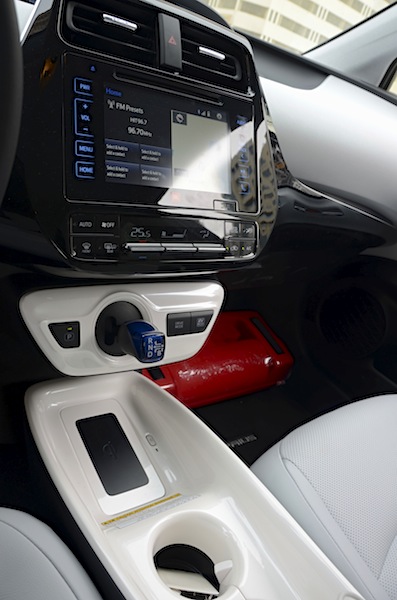
This is such a responsible car which you learn to drive, responsibly. Running on its 15 inch wheels, there is no such quality about the Prius that prompts you to do anything wayward. Even the curious thing about the understeer is how the vague steering adds to it. For whatever excitement it brings, there is a choice of Drive modes – Power, Normal and, of course, Eco.
The Toyota Prius keeps emissions low and that includes sound output too. Except when you are on Power mode, what you hear is more of a thristling sound; try saying th with an r for a long time, “thrrrrrrr” – that’s how it sounds. [There! my bit of onomatopoeic invention for future sake.]
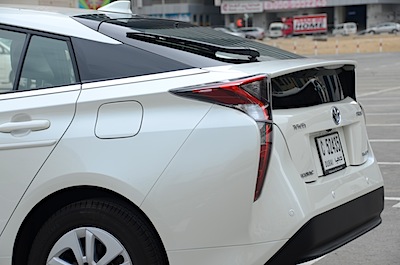
Cabin and Controls
There is something that feels right about Toyota’s interpretation of ‘futuristic’. In black and white, the interiors of Prius look impressive too, and quite different from the cabin of a err… normal car.
The high gloss plastic sculpting the cabin curves, or the leatherette and rubberised plastic material that form the dash and the door trims or even the seats – they defy the current settings, squarely fitting in with the future equation. What strikes you most is what looks like ceramic and is mounted on the steering, the dash and the consoles. May be it’s got something to do with the electric convertor that is housed beneath the console, helping to transfer the power generated by the engine to the battery at the back.
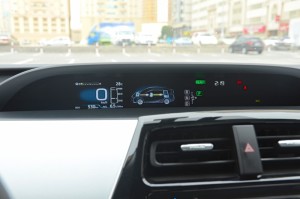
What’s future without gadgetry? My test car was the premium version, and came with driver assist features like the head up display, rear cross traffic alert and of course, a blind spot monitor which complements the right-hand mirror especially. Priced just 10K apart, the top end also offers a rear view camera, navigation screen and JBL speakers. Video and SD card connectivity are standard but the responsiveness of the 7 inch navigation screen, and the navigation itself, is lukewarm.
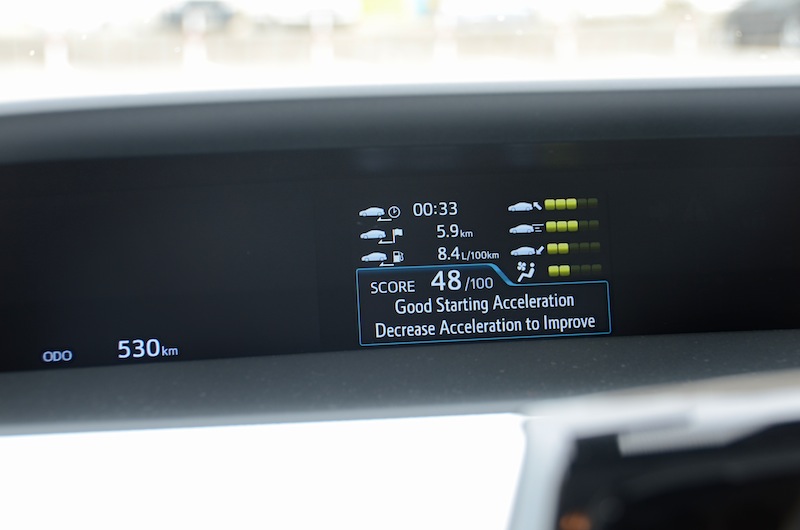
Family Drive
Size-wise, the Prius appears to be similar to a Corolla with more legroom and somewhat less elbow space in the rear and a smaller boot. However, the vaulted roof, the high glass windows and the rear stowaway screen that looks more spacious than it is – they add to the openness inside the car.
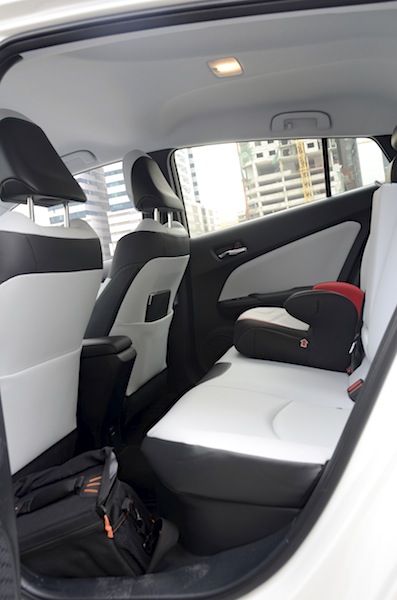
The essential Toyota Prius 2016
The headlines? As the Toyota Prius doesn’t require charging, it should be a natural transition from the current car you drive. In other news, it doesn’t make driving a boring chore or the cabin a dull place while trying to save the earth. On the contrary, it uses design to stand out in a crowd. The Prius can save around 1700 dirhams on fuel every year, for those who drive around 20,000 km – on a rough practical estimate. Together with a reasonable price of AED 90,000, the Prius should encourage many to look at owning a hybrid car today. As they say, the future is now.
Toyota Prius 2016 RATING
-
Looks
-
Drive
-
Ride comfort
-
Pride of ownership
-
Practicality
Summary
While the extensive savings on fuel might still not be enough to convert many in this region, the cool quotient of driving a mission rather than a car should work in favour of the Prius. Especially aided by the reliability of Toyota.

